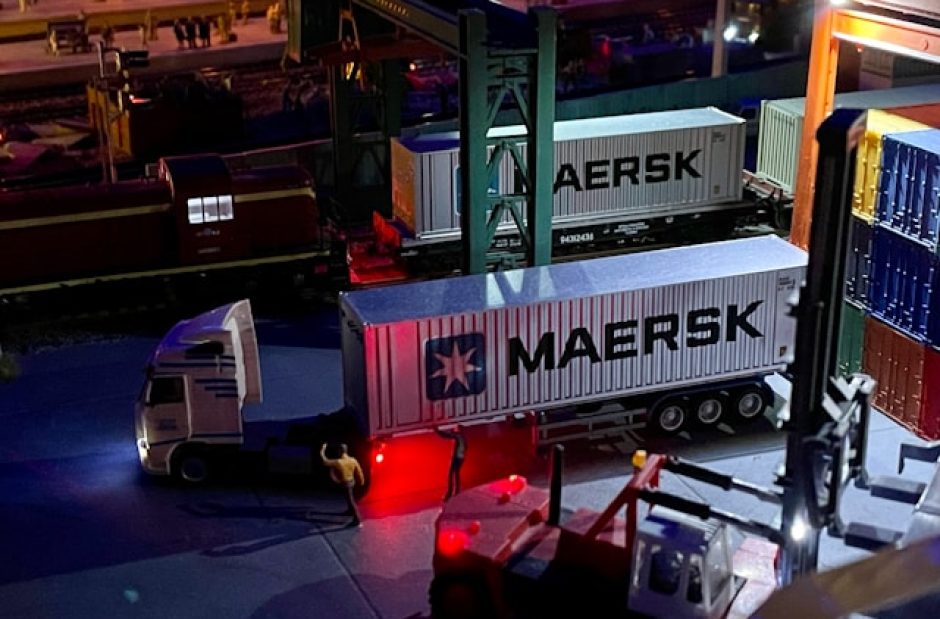Starting July 1, 2025, Maersk will implement a significant rate increase for demurrage and detention fees in Canada. For businesses, freight forwarders, and storage container delivery customers, this change will impact operational budgets, long-term planning, and last-mile logistics.
What’s Changing in July 2025?
According to Maersk’s updated tariff schedule, detention charges for import containers in Canada will rise from $260 to $320 USD/day once the free time expires.
| Container Size | Old Rate (post-free time) | New Rate (July 1, 2025) |
|---|---|---|
| 20’ | $260/day | $320/day |
| 40’ | $260/day | $320/day |
| 45’ | $260/day | $320/day |
This fee applies after 13 days of free storage, a threshold commonly used for customs clearance, drayage coordination, or storage container pickup scheduling.
Demurrage vs. Detention: What’s the Difference?
Let’s clarify the logistics terminology:
- Demurrage: Fees charged when a container stays at the port beyond its free time before pickup.
- Detention: Fees incurred when the customer keeps the container beyond the allowed time outside the terminal (e.g., on their property).
Both charges are designed to keep containers moving. But when delays happen—due to customs, space constraints, or poor planning—costs rise rapidly.
Why This Matters for Storage Container Delivery in Canada
These fee increases directly affect companies and individuals using storage container delivery services, especially when:
- A container is delivered for on-site storage and pickup is delayed
- Clients store containers longer than expected due to project delays
- Drayage capacity is constrained and containers sit too long at terminals
Even a 3-day delay post free time now costs nearly $1,000 USD per container.
How to Minimize Demurrage and Detention Charges
Here’s what shippers and storage container users in Canada can do to reduce the financial impact:
✅ 1. Coordinate Pickup and Drop-Off in Advance
Work with your container delivery service to pre-schedule both the drop and return windows. Avoid last-minute logistics bottlenecks.
✅ 2. Use Third-Party Storage Facilities
Instead of letting containers sit at the port, offload contents into a secure storage facility or rent a mobile storage container delivered to your location.
✅ 3. Work With a Local Drayage Provider
Delays often happen when port drayage is not coordinated in time. Use local teams with real-time scheduling capabilities.
✅ 4. Monitor Container Free Time Closely
Create alerts and assign responsibility within your logistics team to track container free time daily.
Where This Hits the Hardest: High-Volume Ports
While the fee hike applies across Canada, the busiest ports will feel it most:
- Port of Vancouver – Dwell times average 5–7 days in peak season
- Port of Montreal – Customs-related delays still common
- Port of Prince Rupert – Capacity challenges for inland intermodal transfers
Combined with congestion or peak-season demand, demurrage costs can escalate exponentially.
The Bigger Picture: Supply Chain Efficiency
Maersk, like many carriers, is under pressure to keep containers circulating efficiently. By increasing fees, they hope to:
- Encourage faster container turnover
- Discourage long-term storage at terminals
- Reduce congestion at high-volume ports
But for small businesses, importers, and contractors, this also means higher risk when relying on container-based delivery or mobile storage.
Example Cost Scenario:
Let’s break down the real impact of a delayed container return after free time:
| Item | Quantity | Unit Price (USD) | Total Cost |
|---|---|---|---|
| Container Detention (3 days) | 1 | $320 | $960 |
| Pickup Rescheduling Fee | 1 | $150 | $150 |
| Port Congestion Surcharge | 1 | $75 | $75 |
| Total | $1,185 |
A seemingly minor delay can cost over $1,000 USD per container, not counting customs or product loss due to delay.
Action Plan for Canadian Shippers
Here’s a checklist to stay ahead of the rate increase:
- 🔄 Reassess current container delivery timelines
- 📦 Reduce container dependency for long-term on-site storage
- 📋 Negotiate free time extensions in carrier contracts
- 📊 Build storage buffer into freight budgets for Q3–Q4 2025
- 🧭 Explore alternative carriers or direct-to-warehouse models
Stay Informed and Compare Storage Container Options
If you rely on storage container delivery or manage logistics across Canadian cities, you can compare delivery services and rates by region:
- 👉 Toronto, Ontario
- 👉 Montreal, Quebec
- 👉 Vancouver, British Columbia
- 👉 Prince Rupert, British Columbia
- 👉 Calgary, Alberta
- 👉 Edmonton, Alberta
- 👉 Winnipeg, Manitoba
- 👉 Halifax, Nova Scotia
- 👉 Regina, Saskatchewan
- 👉 Saskatoon, Saskatchewan
- 👉 St. John / Moncton, New Brunswick
These pages provide access to local storage container providers, including delivery lead times, fees, and storage alternatives.
Final Thoughts
Maersk’s updated detention and demurrage tariffs are a clear signal: container dwell time is now more expensive than ever.
Whether you manage containerized imports, construction deliveries, or use portable storage containers, you must plan proactively or pay the price.
By coordinating delivery more tightly, exploring mobile off-site storage, and monitoring timelines, shippers can avoid unnecessary charges and maintain operational control.
